13 Dinosaur “Facts” Scientists Wish You’d Stop Believing Krista Carothers ( COURTECY;- READER'S DIGEST )
- লিঙ্ক পান
- X
- ইমেল
- অন্যান্য অ্যাপ
13 Dinosaur “Facts” Scientists Wish You’d Stop Believing & 17 Science “Facts” That Are Actually Not True
When you think of dinosaurs, do you still imagine giant gray scaly beasts that went extinct? Get ready to have your mind blown.
Myth: Dinosaurs are extinct
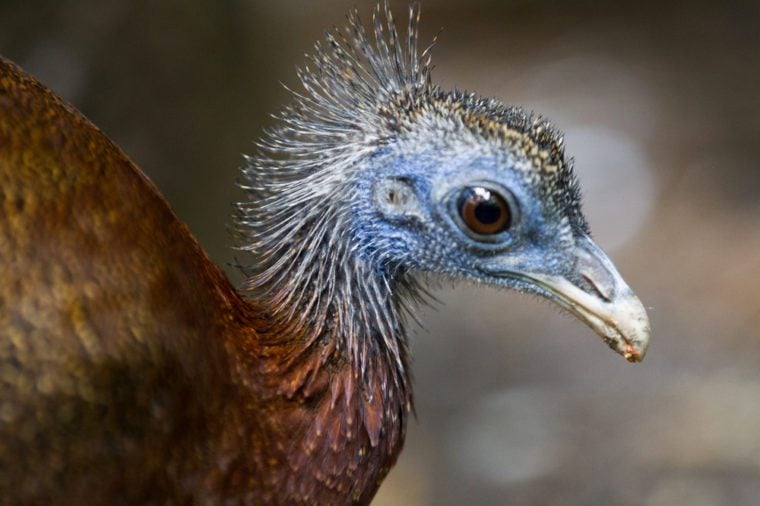 Jonah Goh/Shutterstock
Jonah Goh/Shutterstock
There was definitely a mass extinction event 65 million years ago (probably related to a giant asteroid that smashed into Mexico’s Yucatán Peninsula), and it did spell the end for most dinosaur species. But not all. “Today’s birds evolved from dinosaurs, which makes them every bit as much of a dinosaur as T. rex or Triceratops,” says paleontologist Steve Brusatte, author of the book, The Rise and Fall of the Dinosaurs. “A good analogy is bats. Bats are a weird type of mammal that developed wings and the ability to fly. Birds are a weird type of dinosaur that did the same thing.”
Daniel Barta, a PhD candidate at the American Museum of Natural History’s Richard Gilder Graduate School, adds that there are more species of birds alive today (at least 10,000) than any other group of land-living animals with backbones. “Dinosaurs are alive and well today in the form of their bird descendants,” he says.
Myth: Dinosaurs were scaly lizards
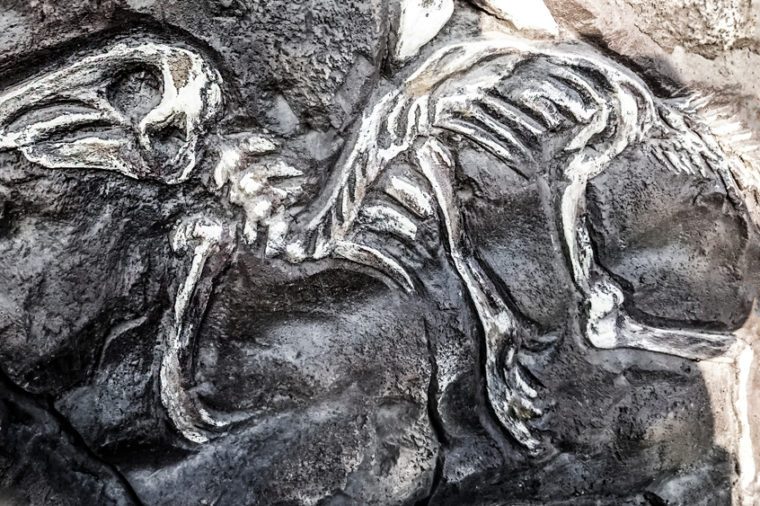 maradon 333/Shutterstock
maradon 333/Shutterstock
Not necessarily. “There are thousands of fossils of feather-covered dinosaurs that have been found in China over the last two decades,” Brusatte says. In fact, fossils show that a cousin of the T. rex called Yutyrannus was covered in downy fluff (which probably didn’t make it less scary to its prey). Feathers would have helped dinosaurs regulate their body temperature, so they would have been particularly helpful to smaller animals such as Velociraptors. Even the biggest plant-eaters might have had a little fuzz, like the tufts of hair on elephants.
Myth: Dinosaurs were cold-blooded
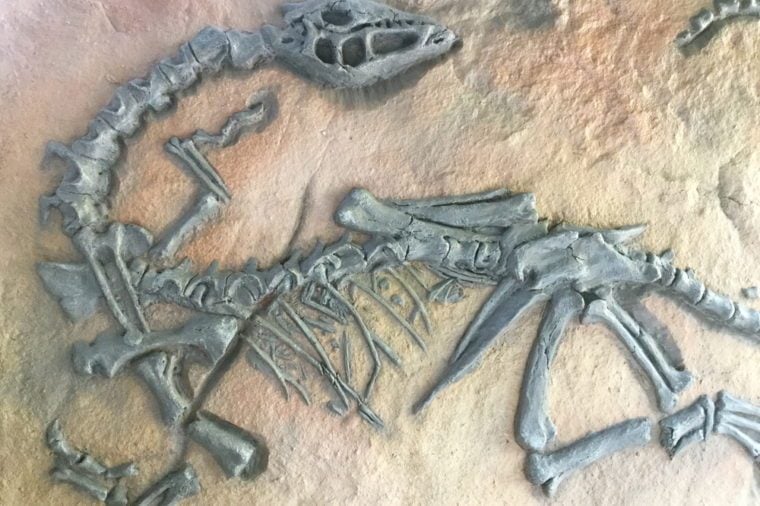 Moolkum/Shutterstock
Moolkum/Shutterstock
Scientists can tell from looking at the microscopic structure of dinosaur bones that they grew rapidly, and only animals like birds and mammals, with fast metabolisms and well-regulated body temperatures, do that. It explains why dinosaurs evolved to have feathers for insulation, but it’s still not totally clear whether their body temperatures worked exactly like ours do. “There are a lot of different ways to be ‘warm-blooded,’” says Barta. “It is probable that dinosaurs were not exactly like birds or mammals in terms of their metabolism.” Check out more interesting animal distinctions you forgot all about.
Myth: They were all grayish-green
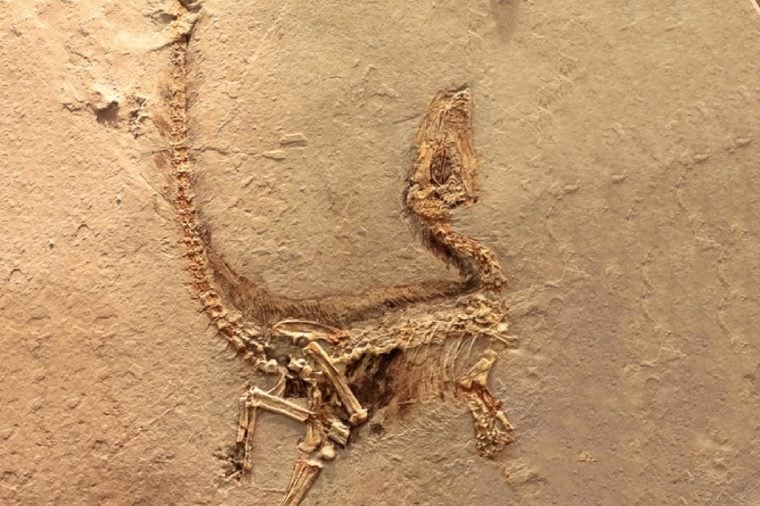 AKKHARAT JARUSILAWONG/Shutterstock
AKKHARAT JARUSILAWONG/Shutterstock
Dinosaurs were actually quite colorful. Amazingly, paleontologists can tell what colors some of them were because they’ve found really well-preserved fossilized feathers containing structures called melanosomes. These held pigments, and their different shapes and arrangements indicate what colors they were. “It’s one of the most amazing things that’s happened in my lifetime as a scientist,” Brusatte says. For example, a small carnivorous dinosaur in northeastern China called a Sinosauropteryx probably had a striped brown tail and a raccoon-like bandit mask.
Myth: They were all giant
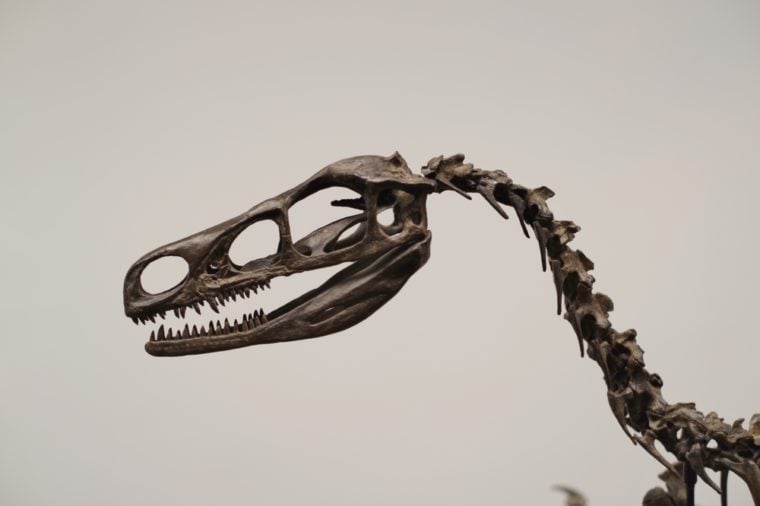 gorosan/Shutterstock
gorosan/Shutterstock
The skeletons of the biggest dinosaurs were, of course, the first ones that caught the attention of fossil-hunters. But now that paleontologists know what they’re looking for, they’re finding dinosaurs of all sizes and shapes. Long-necked sauropods like the Dreadnoughtus schrani could be as big as passenger airplanes. “But many dinosaurs were tiny,” Brusatte says. “Some were only the size of pigeons.”
Myth: We’ve found fossils from most of the dinosaur species
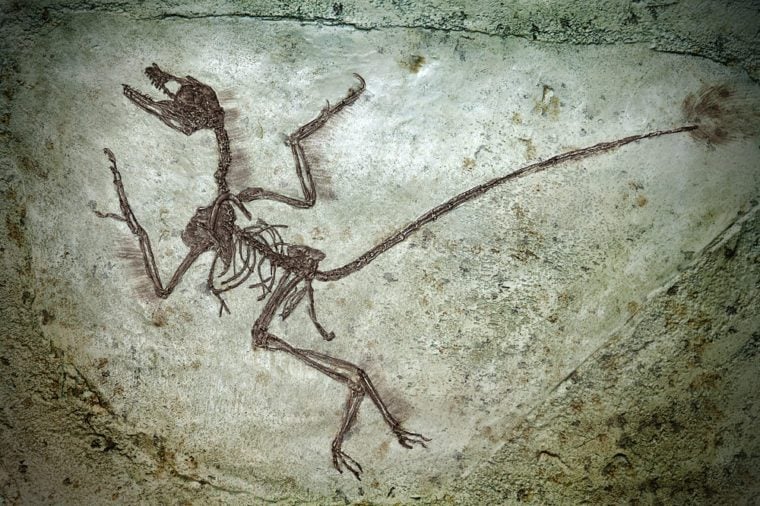 Marcio Jose Bastos Silva/Shutterstock
Marcio Jose Bastos Silva/Shutterstock
Researchers have identified more than 700 species of extinct dinosaurs, but that’s probably a drop in the bucket—we know of about 10,000 species of modern avian dinosaurs, or birds. Fossils are being discovered at a rapid pace, with a new dinosaur species being identified every week, on average. That’s partly because paleontologists are being trained all over the world, Brusatte says, and they’re finding fossils in their countries. “Particularly younger people—women and men—in countries like China, Argentina, and Brazil. These enormous countries are developing quickly, opening up to the world, training their own scientists in new universities and museums.” Take a look at these photos of gorgeous modern avian dinosaurs (birds).
Myth: Mammals evolved after dinosaurs died out
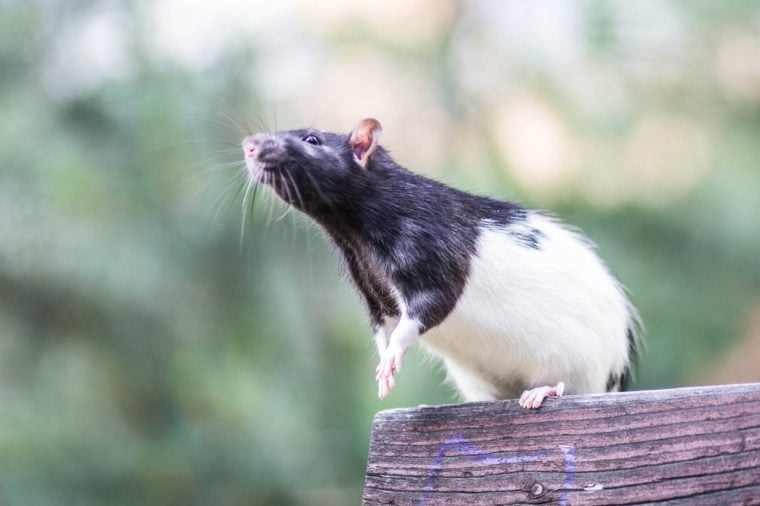 kanashi/Shutterstock
kanashi/Shutterstock
Mammals evolved from a reptile called the cynodont, which looked like a scaly rat and lived more than 200 million years ago, before dinosaurs. Mammals had diversified into marsupial and placental lines of evolution by about 165 million years ago, during the Jurassic period when dinosaurs were having their heyday. “There was never a mammal (that we know of) larger than a badger that lived with the dinosaurs,” Brusatte says. “But almost as soon as the non-bird dinosaurs went extinct, mammals started to diversify and spread around the world and grow to much bigger sizes.”
Myth: All big reptiles were dinosaurs
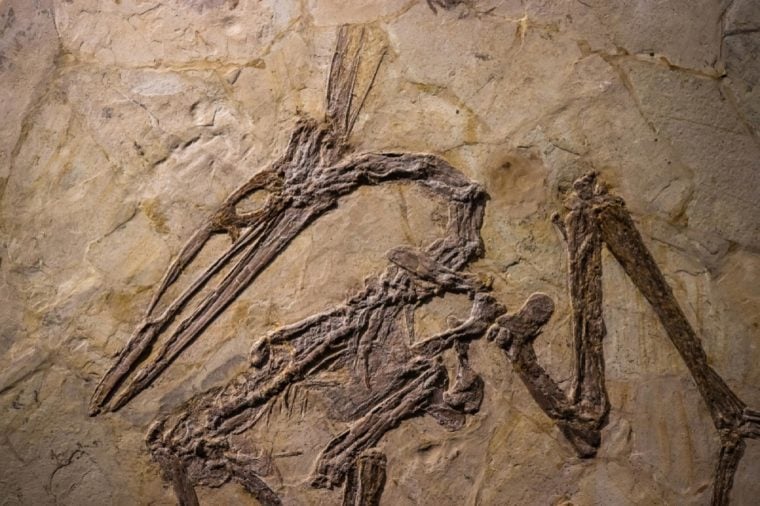 AKKHARAT JARUSILAWONG/Shutterstock
AKKHARAT JARUSILAWONG/Shutterstock
Flying reptiles like pterosaurs (which included pterodactyls) and marine reptiles like plesiosaurs and ichthyosaurs were not dinosaurs, though they lived during the same time period and suffered the same fate during the mass extinction 65 million years ago. They often get lumped in with dinosaurs, though they belong in their own separate categories. But Brusatte says, “There were indeed some flying dinosaurs: birds!”
Myth: Dinosaurs moved really fast
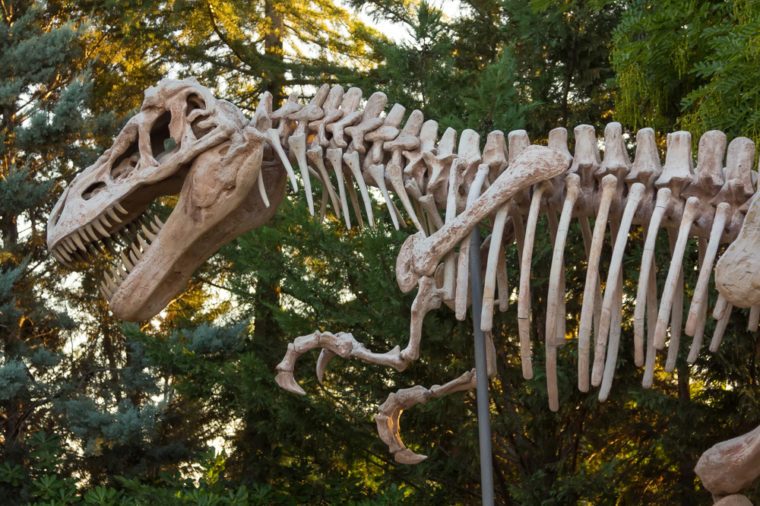 Jose Angel Astor Rocha/Shutterstock
Jose Angel Astor Rocha/Shutterstock
“Some dinosaurs were fast, like the raptor dinosaurs, and some were slow, like the big long-necked dinosaurs,” ” Brusatte says. A recent study showed that Tyrannosaurusprobably didn’t go much faster than jogging human, based on the stress running would have put on its massive foot bones.
Myth: Tyrannosaurus stood upri
CULTURE
17 Science “Facts” That Are Actually Not True
How many do you still believe?
Myth: Water conducts electricity
 Nataliya Sdobnikova/Shutterstock
Nataliya Sdobnikova/Shutterstock
While this is a science myth, it doesn’t mean you should bring your toaster in the bath with you. The reason you shouldn’t swim in a lightning storm doesn’t have to do with the water itself. Pure water is actually an insulator, which means it doesn’t conduct electricity. The danger comes from the minerals and chemicals in it called ions, which have an electric charge. While pure water is theoretically safe around electricity, it’s nearly impossible to find in the real world because even distilled water has ions. Check out these other 51 “fun facts” that are total lies.
Myth: Blood is blue in your body
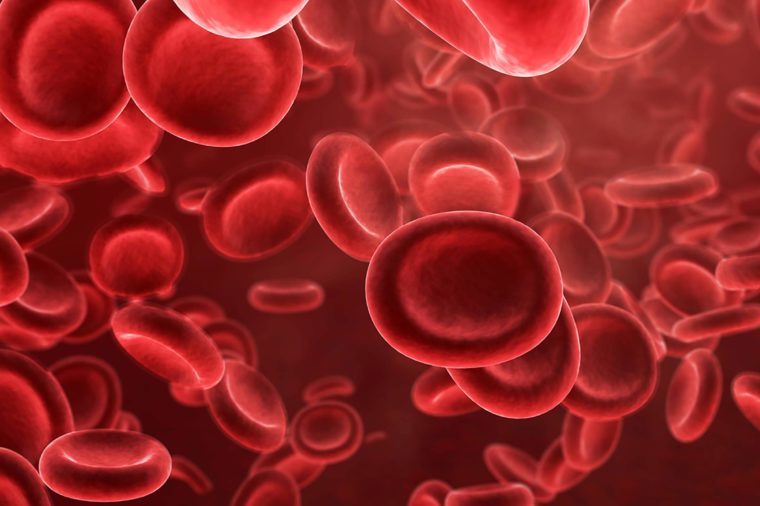 Bart Sadowski/Shutterstock
Bart Sadowski/Shutterstock
A widely shared myth is that blood is blue until it is exposed to air or replenishes its oxygen. Because veins are a greenish blue, that theory sounds reasonable enough. But the fact is, human blood looks the same in your body as outside: red. That hue is brighter when it’s oxygen-rich and darker when it needs that oxygen replenished, but it’s red all the same. The tissue covering your veins affects how the light is absorbed and scattered, which is why the blood circulating your body looks blue. Don’t miss these other 50 myths about the human body.
Myth: Dinosaurs were scaly beasts
 Baishev/Shutterstock
Baishev/Shutterstock
The giant, scaly lizards you see in Jurassic Park probably don’t look that close to what actual dinosaurs looked like. While scientists are still debating what the oldest and biggest species were covered with, one thing is for sure: At least some had feathers. Velociraptor arm fossils have bumps that look just like the ones keeping modern birds’ wings in place, and bones of a Siberian species discovered in 2014 was surrounded with imprints of feathers. While some scientists argue larger species like the tyrannosaurus rex didn’t need big feathers, others theorize that they had at least some form of light feathering, like how elephants are mammals but don’t have thick fur.
Myth: Humans only use 10 percent of their brains
 Luisma Tapia/Shutterstock
Luisma Tapia/Shutterstock
The idea of unlocking hidden brain power might make a compelling storyline for a movie, but it simply wouldn’t happen in real life. One fact playing into the myth is that 90 percent of brain cells are “white matter” that help neurons survive, and only ten percent is the “grey matter” of neurons in charge of thinking. But that white matter could never be used for brain power, so claiming 90 percent of our brain is wasted is like saying you waste peanuts when you throw out the shells. Any fMRI scan will show you that even saying a few words lights up way more than ten percent of your brain. Scientists haven’t uncovered any area of the brain (much less 90 percent) that doesn’t affect thought, movement, or emotion in some capacity. Check out these other 55 health myths that won’t go away.
Myth: The Great Wall of China is the only man-made structure you can see from the moon
 Wuttichok Panichiwarapun/Shutterstock
Wuttichok Panichiwarapun/Shutterstock
Interestingly, this myth has been around at least since 1932, when a Ripley’s Believe it or Not! cartoon deemed the Great Wall of China is “the mightiest work of man—the only one that would be visible to the human eye from the moon.” Of course, that was almost 30 years before a machine would touch down on the moon, so the claim was entirely unfounded. Astronauts have now confirmed that even the Great Wall actually can’t be seen from space, except at low altitudes. Even at those (relatively) low heights, it’s actually easier to see roads and plane runways, whose colors don’t blend into the ground like the Great Wall’s do. Not that the landmark isn’t impressive—find out what it’s really like to repair the Great Wall of China.
Myth: Chameleons change color to match their surroundings
 Anna Om/Shutterstock
Anna Om/Shutterstock
Yes, chameleons can change color by stretching and relaxing cells that contain crystals, which affects how the light is reflected. They can’t change into any color to match their surroundings, though, and their color changes don’t have much to do with camouflage. Instead, chameleons use the crystals mainly for communication (dark colors signal aggression, like when a female doesn’t want to mate), but also temperature control (lighter colors reflect the heat). Those changes aren’t directly used for camouflage, though—just the opposite, in fact. The dull brown and green “resting colors” of chameleons blend in with their surroundings until they switch it up. Other animals are masters at hiding, too—can you spot the animals camouflaged in these photos?
Myth: Neanderthals were a less evolved human ancestor
 Procy/Shutterstock
Procy/Shutterstock
First of all, let’s get one thing straight: Neanderthals aren’t ancestors to modern humans. The two species lived at the same time, mostly in different areas of the globe. When the species did cross paths, there’s even evidence that they interbred. But evidence doesn’t suggest they were cognitively inferior to humans. Fossils show Neanderthals made tools, used fire, cleaned their teeth, ate medicinal plants, buried their dead, and maybe even cared for their sick and wounded. Scientists no longer think Homo sapiens wiped out their Neanderthal cousins. Neanderthals likely were already dying out as the climate changed, while modern humans’ trade networks, diverse diets, and innovative tools helped them survive.
Myth: Earth is the only planet with water
 trialhuni/Shutterstock
trialhuni/Shutterstock
Of course we have yet to find any intelligent life living off interstellar water, but H2O isn’t unique to Earth. Dark streaks that change on Mars suggest there isn’t just ice on the Red Planet—liquid salt-water likely flows on it. What’s more, NASA discovered that beneath a layer of ice on Jupiter’s moon Europa, there’s an ocean containing twice as much water as we have on Earth. Could faraway planets with water sustain intelligent life? Only time will tell.
Myth: It takes seven years to digest chewing gum
 Iurii Stepanov/Shutterstock
Iurii Stepanov/Shutterstock
Don’t freak out if you can’t find a trashcan and need to swallow your gum. The truth is that your body can’t digest gum, not even in seven years. That doesn’t mean it sticks inside your system, though. It will pass through your digestive system without being broken down, then come out in the bathroom like anything else. If kids swallow too much, the gum could block their intestines, but that’s extremely rare. Don’t miss these other 21 common food myths you need to stop believing.
Myth: Goldfish have three-second memories
 Lamyai/Shutterstock
Lamyai/Shutterstock
Fish are smarter than you thought. One study found the freshwater fish African Cichlids could remember the feeding zone of an aquarium after moving to a different tank for 12 days. Lest you think goldfish are any different, another study looked specifically at goldfish and whether they could tell the difference between two different classical songs. They weren’t quick learners, but after more than 100 sessions, the fish would bite a bead associated with the correct song 75 percent of the time. If their memories were really three seconds, that kind of training wouldn’t be possible. Find out why we’re so likely to remember (and repeat) false information.
Myth: A penny dropped from the Empire State building could kill
 Nixx-Photography/Shutterstock
Nixx-Photography/Shutterstock
The story goes that even an innocent penny dropped from the 1,250-foot-tall Empire State Building would build up enough speed on the way down to kill a bystander below. In reality, though, it wouldn’t do much damage—if any. First of all, air resistance called “drag force” would mean the penny would stop accelerating at some point, and reach its max speed about 50 feet from its drop point, according to Scientific American. By the time it reached the ground, it would be moving just 25 miles per hour. That might sting, but it wouldn’t be enough force to break your skull. MythBusters took the theory to an extreme and shot a penny at 3,000 feet per second, but even that wasn’t strong enough to break bones. (For more Americana myth-busting, read these false “facts” about U.S. presidents that everyone still believes.)
Myth: Ostriches bury their heads in the sand
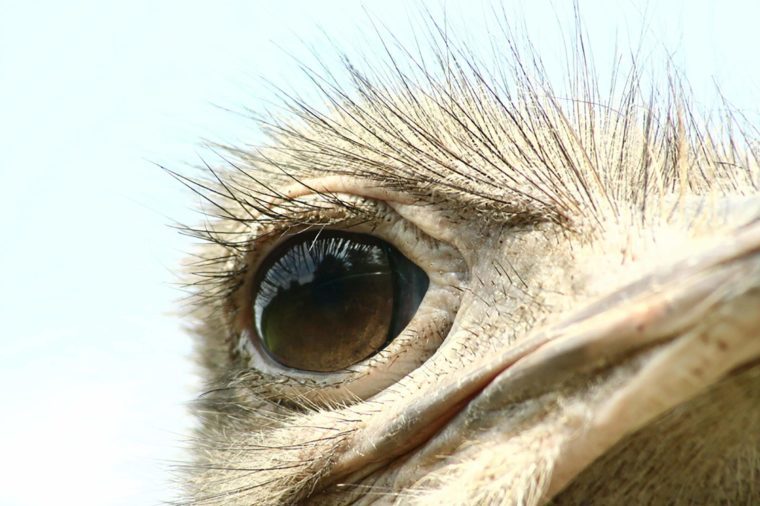 Aleksandra Duda/Shutterstock
Aleksandra Duda/Shutterstock
The birds would die of suffocation if they actually stuck their heads underground when scared. Instead, they actually lie with their head and neck flat against the ground if a predator is approaching. Their light-colored head and neck blend in with the ground, which could explain why people assumed their heads were underground from faraway, according to the San Diego Zoo. For more animal facts, check out the 12 of the smartest species on the planet.
Myth: Opossums sleep hanging by their tails
 rthoma/Shutterstock
rthoma/Shutterstock
You’ve probably seen cartoons—maybe even photos—of opossums lounging upside-down from their tails. While opossum tails are strong enough to grasp branches and even hold the animals’ weight for a short period, adults are too heavy for their tails to support them for long, so they can’t stay like that while sleeping.
Myth: Sugar makes kids hyper
 Max Lashcheuski/Shutterstock
Max Lashcheuski/Shutterstock
Don’t blame the cake if your kid is acting out at a party. The “sugar high” theory started in 1978, when one study found that kids with hyperkinesis, a hyperactivity disorder, had low blood sugar, which, weirdly enough, can be a sign of eating too much sugar. That study was later discredited when researchers realized the “abnormally low” blood sugar was actually considered normal. Since then, double-blind studies have shown sugar doesn’t make kids any more hyper than a placebo. If anything, it’s probably your own expectations. One 1994 study found that after five- to seven-year-old boys took a placebo, the moms who were told their sons had eaten a large dose of sugar were more likely to say their kid was acting hyper. Your kid might also just be excited to let loose with their friends at a party. Here are more myths parents need to stop believing.
Myth: Lightning never strikes the same place twice
 Visual Generation/Shutterstock
Visual Generation/Shutterstock
Anyone familiar with lightning rods could probably already tell you there’s nothing stopping lightning from hitting the same spot twice. The Empire State Building, for example, once endured eight strikes in 24 minutes during a storm. Even without a lightning rod, there’s nothing keeping lightning away from the spot that just got hit. In fact, the features that made the spot likely to get hit once—height, presence of standing water, or terrain shape, for example—would be just as attractive to a second bolt, according to the National Severe Storms Laboratory. Learn how you can stay safe in a lightning storm.
Myth: Common belief in the Middle Ages was the Earth was flat, but it’s really a perfect sphere
 solarseven/Shutterstock
solarseven/Shutterstock
Surprise! Both parts of this myth are false. Scholars have known the Earth is round for thousands of years. Greek philosopher first suggested the idea around 500 B.C., though his thought process had to do with the fact that he thought spheres were the most perfect shape. Still, Aristotle actually found physical evidence backing up his predecessor’s theory. By the time the first century A.D. rolled around, any educated Greek or Roman believed in a round planet. When Christopher Columbus took on his voyage, the fear was that the oceans would be too big, not that he’d fall off the face of the earth. In perhaps the biggest twist, though, Earth isn’t a perfect sphere; the North and South Poles are flattened slightly. Don’t miss these other 18 lessons your history teacher lied about.
Myth: Genes determine race
 Rost9/Shutterstock
Rost9/Shutterstock
You might think people who look superficially different would have big differences in their genes, but that’s not the case. According to the National Human Genome Research Institute, humans share 99.9 percent of their genes with each other. Even that 0.1 percent doesn’t have any racial markers. In fact, a groundbreaking 2002 studyrevealed there is more genetic diversity between people of African descent than between Africans and Eurasians. You can use your genes to trace your ancestors’ geography, but that doesn’t directly tie in to race. Case in point: Sickle cell anemia isn’t a general “African” disease, as it’s normally described; it’s more common in West Africans, but also in Mediterranean, Arabian, and Indian populations.
ght like Godzilla
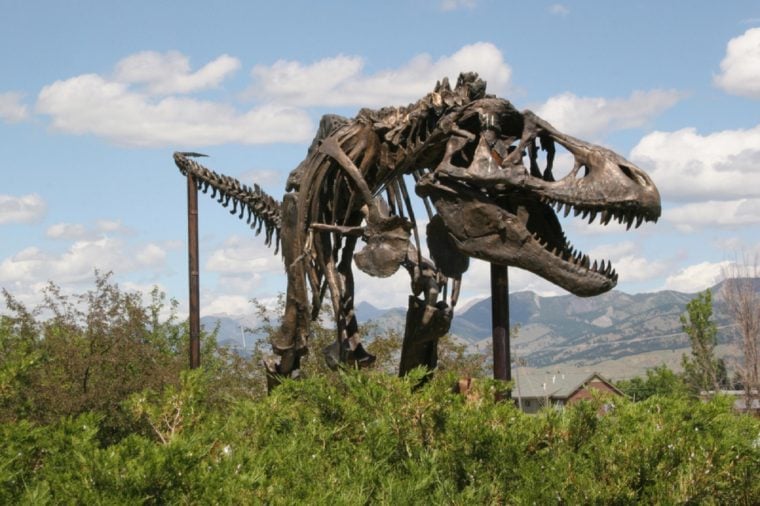 Edgloris Marys/Shutterstock
Edgloris Marys/Shutterstock
No, no, no—museums originally built many T. rex skeleton models in an upright position with their tails on the ground, but researchers have known since the 1960sthat they actually must have held their bodies horizontally, like a giant teeter-totter. Somehow, the message doesn’t seem to be getting through to the public: When a Cornell paleontologist asked students to draw a picture of a Tyrannosaurus, most drew it upright. “I think popular culture usually takes a long time to catch up to current scientific thinking,” Barta says. “Even when updated images do arrive, the outdated images still persist and spread alongside the newer ones.” Here are 23 more “facts” about animals you have all wrong.
NOT a myth: Tyrannosaurus was a fearsome hunter
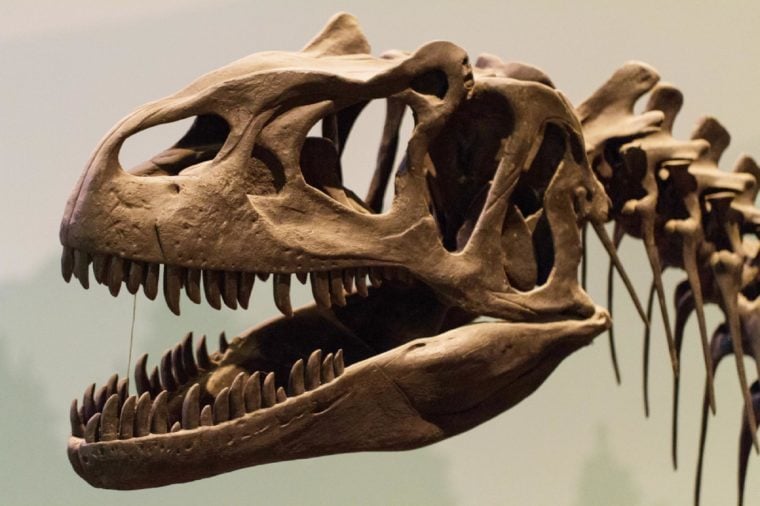 Cesare Andrea Ferrari/Shutterstock
Cesare Andrea Ferrari/Shutterstock
A popular theory in the 1990s held that T. rex wasn’t as tough as we’d long thought—that instead, it was basically a giant scavenger, roaming around eating carcasses that other predators had brought down. That theory was wrong: “Evolution doesn’t produce a bus-sized animal with a bathtub-sized head and 50-some railroad spike teeth that can crush bone just so that animal can walk around picking up dead carcasses,” Brusatte says. Tyrannosaurus probably wouldn’t have turned down a free meal if it came upon a fresh carcass, but it was definitely capable of killing a live prey animal. Researchers have found Triceratops bones with Tyrannosaurus bite marks that had healed up, meaning that the two species definitely tangled (and that Triceratops occasionally made it out alive).
Myth: Tyrannosaurus would have hunted Stegosaurus
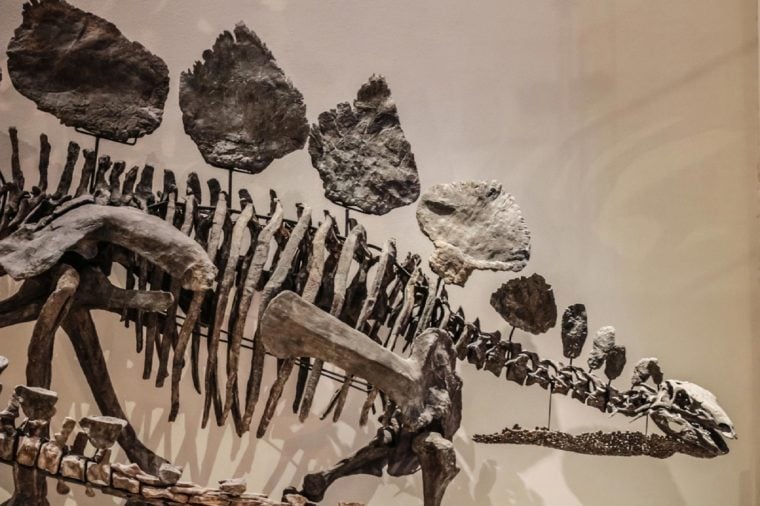 AKKHARAT JARUSILAWONG/Shutterstock
AKKHARAT JARUSILAWONG/Shutterstock
In fact, more time separates these two species of dinosaurs than separates T. rex from us today. Stegosaurus lived about 150 million years ago, during the late Jurassic period, and Tyrannosaurus evolved around 67 million years ago, during the Cretaceous period, just a few million years before the mass extinction event. Check out these other 51 “fun facts” that are total lies.
Myth: They were evolutionary failures
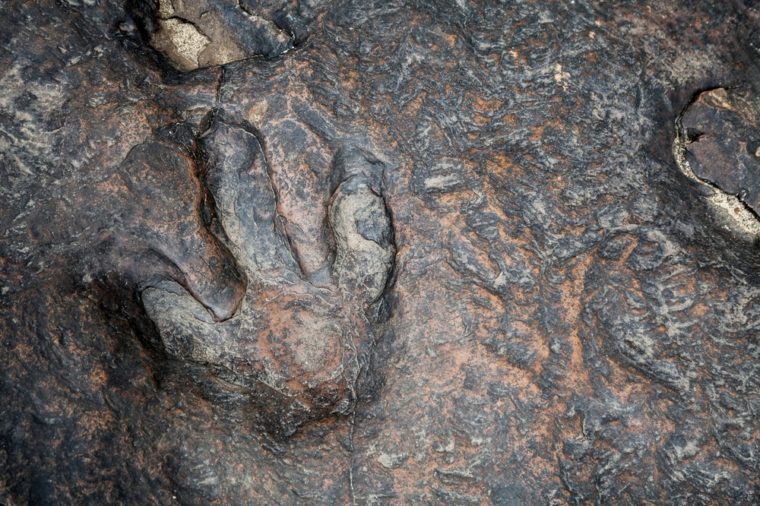 patarapong saraboon/Shutterstock
patarapong saraboon/Shutterstock
“I hate this stereotype that dinosaurs were evolutionary failures, that they were dim-witted, slow-moving, uninteresting animals that just sat around waiting to go extinct,” Brusatte says. “They were an empire that ruled the world for over 150 million years!” To put it in perspective, our own species, Homo sapiens, has only existed for about 200,000 years so far; our first ancestors only appeared 7 million years ago. And don’t forget: If you listen at a window, you’re likely to hear the call of a modern avian dinosaur in your own backyard.
- লিঙ্ক পান
- X
- ইমেল
- অন্যান্য অ্যাপ

মন্তব্যসমূহ
একটি মন্তব্য পোস্ট করুন